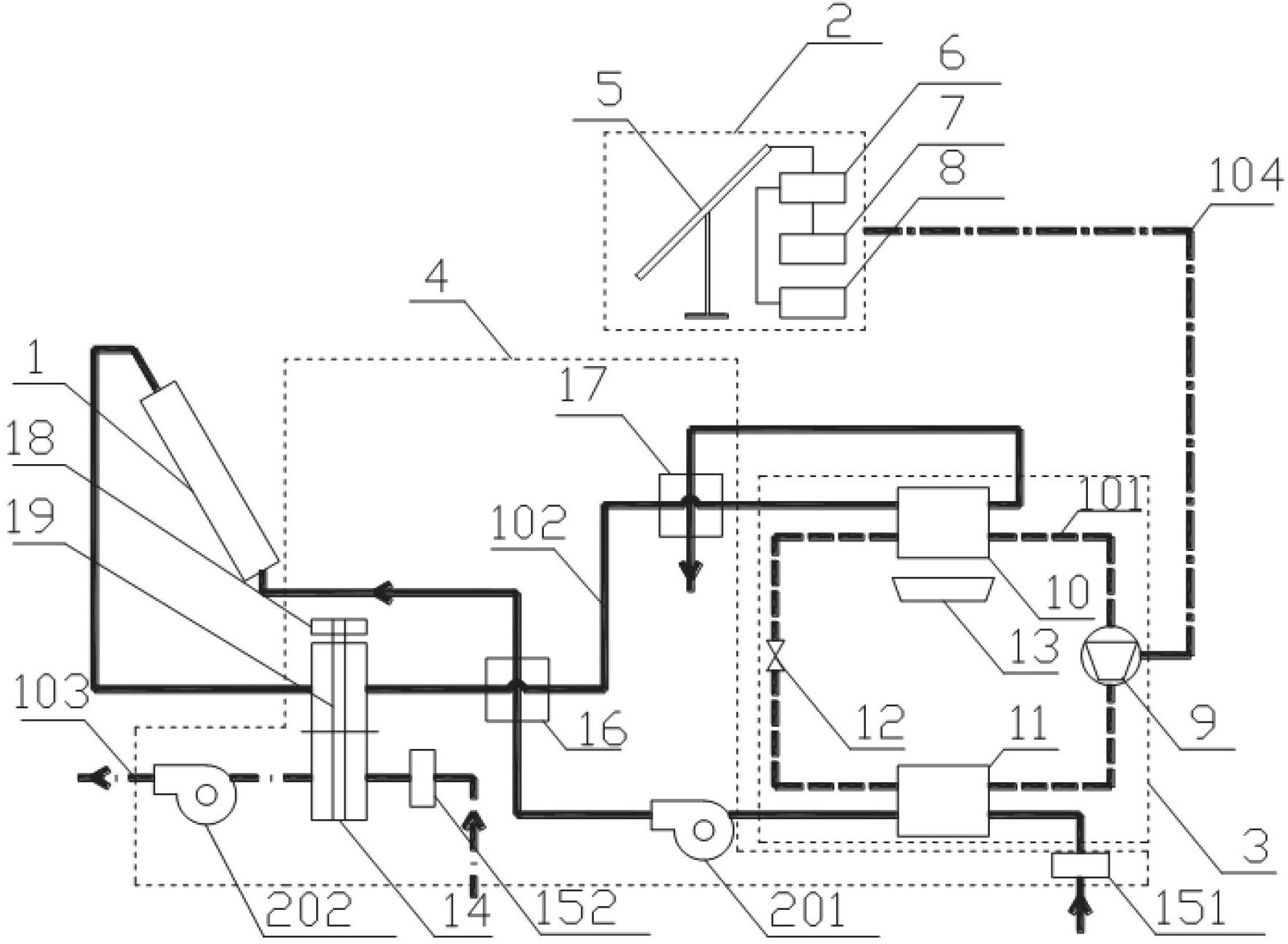Device capable of obtaining water from air
An air and air collector technology, applied in water supply installations, drinking water installations, buildings, etc., can solve the problems of energy consumption, poor reliability and low energy efficiency, and achieve the effect of reducing energy consumption and improving efficiency
- Summary
- Abstract
- Description
- Claims
- Application Information
AI Technical Summary
Problems solved by technology
Method used
Image
Examples
Embodiment Construction
[0023] The embodiments of the present invention will be described in detail below with reference to the drawings.
[0024] Such as figure 1 As shown, a device for taking water from the air includes a solar air collector 1, a solar photovoltaic power generation unit 2, a compression refrigeration unit 3, and a rotary dehumidification unit 4, wherein the solar air collector 1 is connected to the The wheel dehumidification unit 4 is connected to the compression refrigeration unit 3, the compression refrigeration unit 3 is also connected to the solar photovoltaic power generation unit 2, and the solar air collector 1 is used as The heat source of the runner dehumidification unit 4, the solar photovoltaic power generation unit 2 provides the power required by the runner dehumidification unit 4 and the compression refrigeration unit 3 through electrical connections, and the compression refrigeration unit 3 is used for compression refrigeration, so The rotary dehumidification unit 4 is...
PUM
 Login to View More
Login to View More Abstract
Description
Claims
Application Information
 Login to View More
Login to View More - R&D
- Intellectual Property
- Life Sciences
- Materials
- Tech Scout
- Unparalleled Data Quality
- Higher Quality Content
- 60% Fewer Hallucinations
Browse by: Latest US Patents, China's latest patents, Technical Efficacy Thesaurus, Application Domain, Technology Topic, Popular Technical Reports.
© 2025 PatSnap. All rights reserved.Legal|Privacy policy|Modern Slavery Act Transparency Statement|Sitemap|About US| Contact US: help@patsnap.com


